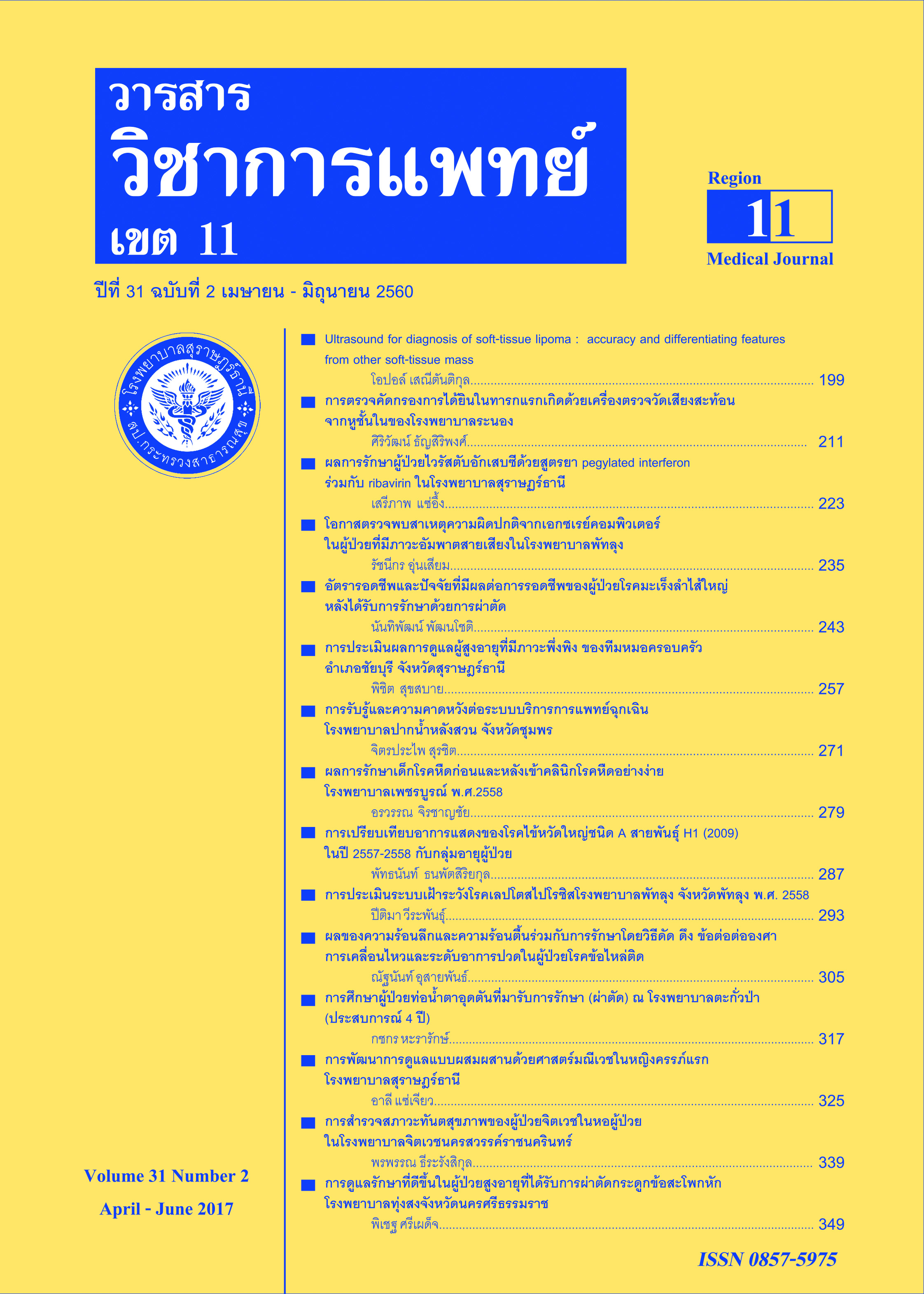The Study of Nasolacrimal duct Obstruction Patients Treated at Takuapa Hospital, 4 years’ experience
Keywords:
Nasolacrimal duct obstruction, Endoscopic dacryocystorhinotomy, Success rate, Failure treatmentAbstract
To determine the age, symptoms, duration of symtomps, site of eye, day of hospital stay, and success rate in nasolacrimal duct obstruction at Takuapa Hospital.This is a retrospective descriptive study. The author reviewed medical records of all nasolacrimal duct obstruction patients treated at Takuapa Hospital from December 2012 to December 2016.During the study period, 47 nasolacrimal duct obstruction patients were treatedwith endoscopic dacryocystorhinostomy at Takuapa Hospital. All patients were male 11 patientsfemale 36 patients. The common age group was 70-80 years old (13 patients, 27.66%). Most patients came with epiphora. Duration of symptom was more than 1 week (38 patients, 80.85%). The site of eye was found almost equally in both sides with post sac obstruction. Duration of hospital stay about 3 days. Success rate was 91.49% with 4 patients failure surgery. Risk factor of surgical outcome was duration of symptom and technique of surgery (mucosal flap, microdebrider and stent instrument)
References
2. Kashkouli M.B., Pakdel F., Hashemi M. Comparing anatomical pattern of topical anti-glaucoma medications associated lacrimal obstruction with a control group. Orbit Amst. Neth. 2010;29, 65–69.
3. Weitzel E.Wormald P. Endoscopic Dacryocystorhinostomy. In Cummings Otolaryngology: Head and Neck SurgeryElsevier/Saunders.2014
4. Erdöl H., Akyol N., Imamoglu H.I. Long-term follow-up of external dacryocystorhinostomy and the factors affecting its success. Orbit Amst. Neth. 2005;24: 99–102.
5. ElinaPenttila, M.D., Ph.D, Grigori Smirnov, M.D.,Ph.D. Endoscopic dacryocystorhinostomy as treatment for lower lacrimal pathway obstructions in adults: Review article. Spring 2015;6(1):12-19.
6. Peter John Wormald, MD, Angelo Tsirbas, Fraco, AAFPS . Powered endoscopic dacryocystorhinostomy with mucosal flaps. Operative Techniques in Otolaryngolagyi 2009; 20:92-95.
7. Jordan D.R. McDonald H. Failed dacryocystorhinostomy: the sump syndrome. Ophthalmic Surg. 1993;24:692–693.






